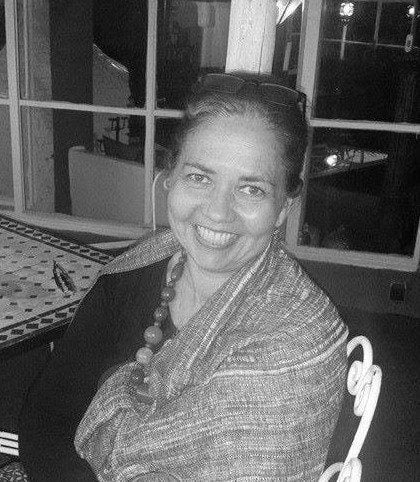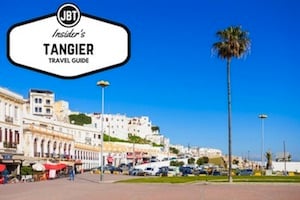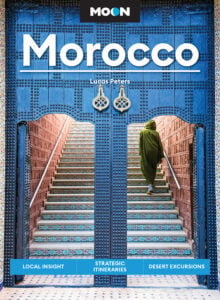You’ve booked your ticket to Morocco, now you need to decide where to stay. After all, you’ll need a place to sleep, shower and relax between riding camels on the beach, shopping for handmade rugs and eating couscous on your holiday to Morocco. While there are a variety of chain hotels and luxury resorts available throughout the country, every visitor should strongly consider spending at least a few nights in a Moroccan Riad.
So What Exactly Is a Riad?
Traditionally, a riad (which means garden in Arabic) was a house built for the privacy of a multi-generational family in Morocco. Riads were built tall but narrow, centered around a courtyard or atrium with rooms facing and opening inward. The expression “never judge a book by its cover” could have been invented for the riad. From the outside it can appear like a blank brick or mud clay wall, a veritable fortress with a heavy door and no outer windows. Step inside and you are likely to be greeted by floral scents and the tinkling of a fountain in the courtyard.
Moroccan riads are an architectural and designer dream, and in most cases, live up to instagram expectations. They are the quintessential Moroccan experience, often characterized by rose petals and romantic corners. The colorful tiles and indoor gardens, perfumed with jasmine and orange blossom were traditionally places of cool refuge, where the women of the house did most of their socializing . Of course, traditional riads did not have running water. The residents did their bathing at their local hammam, or bathhouse.
Thankfully, many of the ancient buildings have been renovated and updated with modern essentials alongside all the traditional decorative details, making them perfect for overnight guests. Running water and plumbing are of course standard, as are plunge pools, rooftop gardens, restaurants, spas and bubbling fountains. The price range for a riad falls anywhere on the scale from budget to super splurge. Some riads are so luxurious and over the top, that they are a worth a visit in themselves. If your budget doesnt run to luxury, there are several of these top end riads open to the public for a rooftop cocktail in the evening, or a house speciality tajine for lunch.

Choosing A Riad
Having focussed your options to fall comfortably within your budget, the chances are you will still be spoiled for choice. The pressure of planning the perfect Moroccan trip can start to build when faced with so many beautifully renovated riads, but here are a few points worth keeping in mind. If you are going to be in Marrakesh in mid summer, opt for the riad with that perfect plunge pool in the courtyard. If you are visiting Fez in winter, check to see that there is a heater or fireplace in the room as it can get cold. Moroccan riads are generally more about keeping cool in summer than warm in winter.
Location is another key point to consider before hitting that booking button. Try and get an idea of just how central – or not – the riad is. Is it in the same area as that restaurant you want to sample, or the museum that is top of your itinerary? If you are self-driving, check with the riad what the parking situation is. As parking is at a premium in and around a medina, expect to pay for overnight parking.
Some parts of the medina can be really noisy at night if located on a busy square or through road, although this is where the central courtyard design comes into play, as the hustle and bustle of ouside can pass by unnoticed as you sip on your mint tea behind closed doors.

What to Expect From Your Riad
The architectural style of the riad is designed to keep things cool. In places like Marrakesh and Fez, where things can get very hot mid summer, the riads will usually be designed with high ceilings and minimal windows, so don’t expect to be able to throw open your windows and look out onto the medina. The thick walls and fountains in the courtyard all contribute to the cooling of the air, making the use of an a/c unneccesary except on the hottest of days. On the coast, in places like Essaouira the impenetrable walls that characterize the riads of Marrakesh will be punctuated by more outward facing windows allowing the sea breeze to filter through to the courtyard. Coastal riads also tend to be lighter and brighter, bedrooms are often a little smaller, with less of the emphasis on the high ceilings found inland required to keep the temperatures down. Although essential riad characteristics are similar across the country, architectural styles and detail will differ from town to town depending on local materials, the climate, and the history. Coastal towns often have a Spanish or Portuguese historical connection and this is reflected in the architecture, while the red walls and ochre walls of Marrakesh look to the desert.

Decorative Details in a Riad
With restoration being key to many of the renovations, you might find a treasure trove of Moroccan crafts on the walls and floors, and even the ceilings – actually, especially the ceilings – of your riad. The riad is likely to be could be adorned with tadelakt plaster, stucco decoration, and zellij tiles. Painted and carved wooden doors, hand crafted lanterns, and woven throws are all part of the Moroccan riad lifestyle, making your riad so much more than just a place to throw down your suitcase before heading out into the medina.
What a Difference a Dar Makes
In your search for the perfect place to stay, you will come across a few other words that give you an indication of the style and location of accomodation being offered. While exploring the riads on offer, some might use the term Dar as a prefix. While riad means garden, dar translates quite simply as house, and traditionally would have been a slightly more modest home with a central courtyard rather than a garden. Like a riad it will be on multiple levels facing inwards with rooms opening onto the courtyard. A dar might not have a formal garden, but the courtyard is still likely to be full of fountains and fragrant plants. The lines between the dar and the riad are blurred and both offer the traditional design details and lifestyle that will make your trip to Morocco memorable.
A Few Riad Reminders
A few things to note about riads before you book your stay …
- There is usually only one entrance into the riad which remains locked 24 hours a day. Inner bedrooms often don’t have locks, so double check with the staff before leaving valuables behind.
- Riads are often owned by off-site foreigners and largely staffed by Moroccans who may not speak English fluently. Be prepared to do some gesturing if you don’t speak French or Arabic well.
- Finding your riad might be an adventure unto itself, since they’re located on maze-like, narrow streets and don’t have any distinguishing outer characteristics besides maybe a small sign. Get clear directions on booking and don’t be afraid to use a map. Alternatively arrange a central meeting place so you can be guided directly to the riad.
- Riads are so calm, peaceful, and beautiful that it’s easy to spend an entire day or two resting on outdoor cushions and sipping mint tea. Make sure you’re not isolating yourself from the rest of the city.
After a long and exciting day exploring the souks and medina, there is no better feeling than lounging on a riad rooftop as the suns sets, while listening to the call to prayer from a local mosque reverberate off the ancient city walls. You’ll truly feel like you have arrived in Morocco.
About the Author
 Pauline de Villiers Brettell is a freelance writer and designer who lives between the UK and Morocco. When in Morocco she is based in the small seaside village of Asilah, and spends time working with local weavers and sourcing textiles in between attempting to grow enough olives for an annual supply of olive oil! She writes about all of these things — the olives, the carpets, and other elements of design inspiration — on her blog Tea in Tangier: www.teaintangier.com.
Pauline de Villiers Brettell is a freelance writer and designer who lives between the UK and Morocco. When in Morocco she is based in the small seaside village of Asilah, and spends time working with local weavers and sourcing textiles in between attempting to grow enough olives for an annual supply of olive oil! She writes about all of these things — the olives, the carpets, and other elements of design inspiration — on her blog Tea in Tangier: www.teaintangier.com.
Photos by Lucas Peters. Lucas is the principal photographer and author of the Moon Guidebooks: Morocco as well as Marrakesh and Beyond published by Hachette. He edited and contributed to the Our Morocco anthology and helps the travelers of Journey Beyond Travel experience the adventure of a lifetime. He lives in Tangier with his family.











Thanks Megan for those interesting information 😉 It’s important to inform our english speaking guests in Morocco – Regards Mohamed
hello I just want to inform about our new renavated Riad…take a look..
http://www.riadkantarell.com
all my best
leif.e.boman